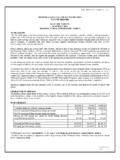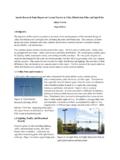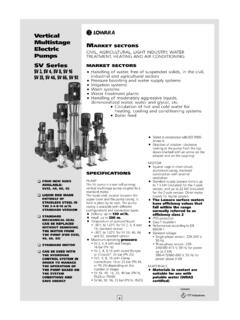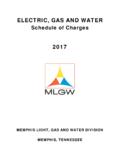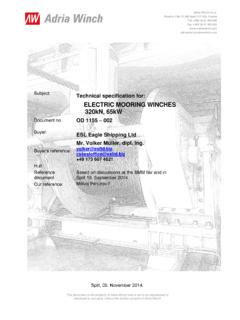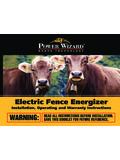Transcription of Wire Diagram Switch & Circuit The Light-House …
1 Physics Electricity The Light-House Project CA Standards: PH5. a. Students know how to predict the voltage or current in simple direct current (DC) electric circuits constructed from batteries, wires, resistors, and capacitors. PH5. b. Students know how to solve problems involving Ohm s law. PH5. c. Students know any resistive element in a DC Circuit dissipates energy, which heats the resistor. Students can calculate the power (rate of energy dissipation) in any resistive Circuit element by using the formula Power = V (potential difference) x I (current) = I2R.
2 These lessons are not intended to be a complete unit, but rather a learning activity guide for concept attainment. Teachers should supplement these lessons with appropriate reading material and problem sets. The idea and student handouts for the Light-House project were generously shared by Bree Barnett Dreyfuss, who teaches physics at Amador Valley High School in California. wire Diagram Switch & Circuit Prototypes The Light-House Build & Blueprint Student Experience Students use Circuit schematics to create a wire Diagram for their house. Students must get Diagram approved by the city (teacher) in order to get project materials.
3 Students receive essential project materials (listed below) and must build prototypes of their series and parallel lights circuits, including switches. They determine a way to power both prototyped circuits from the same voltage source. Students design and build a functional model of their "dream house." Minimum requirements: 2 lights in series, 3 wired in parallel, and 1 stand-alone light , powered from a 9V battery with individual off and on switches. Students create design poster showing wire Diagram and blue building blueprint. Material -- For each student: 6 Christmas lights + wire 3 paper clips 6 brads Section of cardboard or foam core The cart Big Idea diagrams allow engineers, architects, and contractors to analyze the performance of a Circuit before building it.
4 The three branches of lights are in parallel with each other so they may operate independently. Engineering requires an planning, prototyping, and analysis. Blueprints are accurately-scaled diagrams of structures or machines. Connection to Culminating Activity The approved Circuit Diagram will guide the wiring of lights, switches, and voltage source in the house. The prototypes allow students to quickly test switches on their series and parallel circuits. -- Time One 55-min period One 55-min period Two 55-min periods, plus time (~1 week) for students to work on projects at home.
5 Lesson Plans for Light-House Culminating Project Prior Knowledge: Students know the requirements for a Circuit (closed, conducting loop & voltage source) Students can create circuits with resistors in parallel and series, and can describe how adding additional resistors affects the voltage, current, and effective resistance of that particular Circuit configuration Students know and can apply Ohm s Law for circuits (V = IR) 1. wire Diagram Objective: Students will create wire diagrams for their electric buildings. Engage and Explore 1. Students are asked to respond these a.
6 Do you think the electrical appliances in your house/apartment are in series or in parallel with each other? How do you know? b. How do you think electricians know how to correctly install lights and electrical outlets in a building? 2. Teacher provides support (as needed) in guiding students towards creating the correct wire Diagram for the electric building (One Switch controls a single lamp, one Switch controls two lamps in series, and one Switch controls three lamps in series, with all three branches in parallel with each other, connected to a 9-V voltage source).
7 3. Students submit wire diagrams to The City Inspector (the teacher) for approval. One representation of wiring (there are many different ways this can be drawn and still be correct): 2. Switch and Circuit Prototypes Objective: Students will prototype series and parallel Circuit sections and test switches. Switch Prototype tutorial (Bree Barnett Dreyfus): Explain 1. Show examples of Circuit diagrams drawn by various students in the class (students will place Circuit elements in different locations on their page, and the various branches of the Circuit will be arranged differently from student to student), and ask whether these circuits are really the same, even though they don t look identical.
8 2. Have students create two non-identical looking diagrams of two lamps in parallel a. Ask whether the physical wiring must match the exact picture of the wiring Diagram , of whether the actual Circuit may look slightly different and still function the same as the schematic. Elaborate 3. Have students create and test the prototypes to ensure that the switches and lights function as intended. 4. Teacher should provide feedback to students as to whether the series and parallel light circuits are constructed correctly. 3. Light-House Build & Blueprint Objective: Students construct light -houses according to Circuit requirements, and create blueprints that accurately depict their buildings.
9 Evaluate 1. Have students brainstorm what they would have in their ultimate dream house. They can create a list of themes or desirable features to include. Students should sketch the layout of the structure and the rooms (doors, windows, stairs, etc.). 2. Students are given time in class to acquire materials from the T4T cart and explore potential uses for the various materials. 3. Students create full electric building model. 4. Students create design poster selling their house to the public, explaining the purpose of each room and the theme of the entire building.
10 Design poster must include approved Circuit Diagram and floor plan, front elevation, and side elevation blueprints of the house. *During all activities teacher serves as a facilitator of student learning ( student centered instruction). Most tasks should be completed by students after simple directions, or facilitated questions to enhance student learning. **Use of student handouts serves as guidelines for students. Accommodations All individual accommodations for students should be met with respect to your particular students and classroom dynamics and will vary from class to class and group to group.

